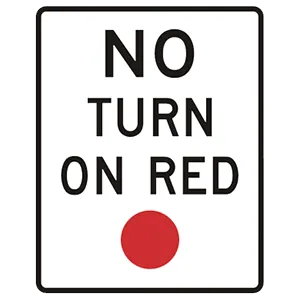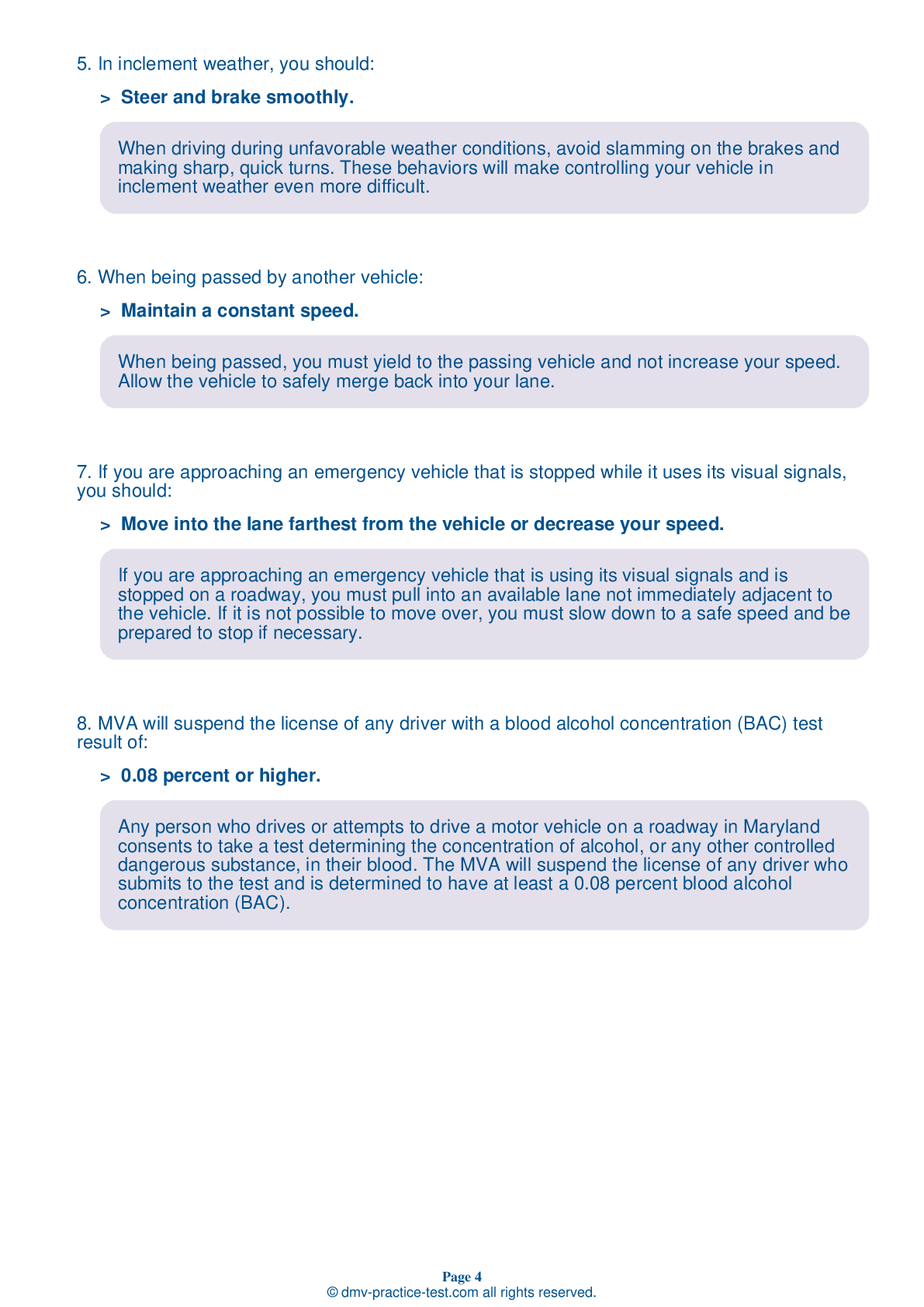FREE Maryland DMV Practice Test #21 Page 2 of 3
Maryland DMV practise examinations have been updated for January 2025. It includes questions based on the Maryland Driver Handbook's most essential traffic signals and regulations for 2025. Use actual questions that are very similar (often identical!) to the DMV driving permit test and driver's licence exam to study for the DMV driving permit test and driver's licence exam.
On the practise exam, each question gets a tip and explanation to help you remember the concepts. The written component of the official Maryland DMV test will include questions about traffic rules, traffic signs, and driving statutes, as well as knowledge from the Driver Handbook.
To obtain a passing grade, you must correctly answer 22 of the 25 questions. Take our DMV practise exam to help you prepare for your Maryland instruction permit or driver's licence.
The DMV exam is available in several languages.
Using any kind of testing assistance will result in an automatic fail, and the DMV may take additional action against your driver's licence, so stay away from it.
9 . Give the right-of-way to any pedestrian who is:
Drivers must yield the right-of-way to pedestrians who are crossing the street in any marked or unmarked crosswalk. In the interest of safety, drivers should yield the right-of-way to people crossing any street.
10 . To avoid hydroplaning while driving in rainy conditions, you should:
When driving too quickly in wet conditions, your tires may lose all contact with the road surface. Loss of traction will cause the vehicle to ride on top of the water, which is called "hydroplaning." The best way to prevent this from happening is to drive more slowly in rainy or wet conditions than you would when driving during ideal weather conditions.
11 . When you drive through a construction zone, you should:
To avoid contributing to chronic traffic congestion, you should not "rubberneck." That is, you should not slow down to look at out-of-the-ordinary things.
12 . A fluorescent yellow-green sign may indicate:
Fluorescent yellow-green is used for school, pedestrian, and bicycle signs. Be especially alert for cyclists, children, and other pedestrians when near a fluorescent yellow-green sign.
13 . This sign is a:

Warning signs are usually yellow with black markings. They alert you to conditions that are immediately ahead. There may be an upcoming change in traffic direction, a steep downgrade, or another potentially hazardous situation that requires action on the part of the driver.
14 . This road sign means:

Regulatory signs provide notice to road users of traffic laws that must be obeyed. When posted at an intersection, this sign tells drivers that turning right or left on a solid red signal is prohibited.
15 . This sign means:

This sign indicates that there is an intersection with a side road ahead.
16 . When you see a flashing yellow light at an intersection, you should:
A flashing yellow light at an intersection indicates that drivers should slow to a safe and reasonable speed and proceed with caution.
2025 Maryland | Frequently Asked Questions
1. Be at least 15 years and 9 months old.
2. Pass the vision exam.
3. Complete the Maryland MVA Online Driver Test Tutorial.
4. Pass the knowledge test.
5. Provide proof of identity, age, and Maryland residency.
6. Have a parent or guardian co-sign your application.
7. Pay the required fee.
Remember, you must hold your learner's permit for nine months before you can take the driving test.



